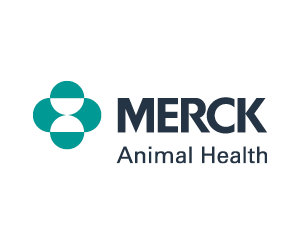Monitoring principles
The overarching goal of monitoring diabetic cats and dogs is to control clinical signs of DM while avoiding hypoglycemia.
Stated another way, the definition of a controlled diabetic is absence of clinical signs and hypoglycemia.
Blood glucose levels do fluctuate and short periods of mild hyperglycemia are acceptable. The goal is not necessarily to normalize BG, but to keep the BG below the renal threshold (200 mg/dL in dogs and 250–300 mg/dL in cats) and to avoid hypoglycemia. When BG is above the renal threshold, glucosuria occurs, resulting in PU/PD. None of the monitoring modalities are perfect, and they each have strengths and weaknesses. Although normalizing clinical signs (such as resolution of PU/PD/PP and achieving ideal body weight) supersedes all other monitoring indicators, every attempt should be made to also monitor BG in the diabetic patient. To illustrate, if a patient is consistently negative for glucosuria, without measuring BG it is impossible to determine if the individual is a “perfectly regulated” diabetic or hypoglycemic.
Monitoring diabetic pets can be challenging. The “Monitoring” algorithm provides a quick reference for three types of DM patients–newly diagnosed, previously diagnosed, and previously diagnosed but currently unregulated.
Monitoring options include performance of BGCs, monitoring UG, measuring fructosamine, and assessment of clinical signs and weight. Results from different monitoring approaches may conflict. In a review of 53 cases of canine DM, BG measurements and fructosamine concentrations were consistent with good glycemic control in only 60% of dogs judged to have good clinical control. Furthermore, although all monitoring parameters were significantly improved in dogs with good clinical control, considerable overlap existed between dogs with good and poor clinical responses.30 In cats, no single monitoring parameter best correlates with the level of clinical control identified.31
Key points about monitoring
- The hallmark of an appropriate DM-monitoring approach is to interpret all monitoring modalities in light of clinical signs.
- In cats and dogs, DM is probably well controlled if the pet is not showing signs of PU, PD, or PP and weight is stable.
- Senior cats and dogs of advanced age need to be closely monitored.
- Performing spot checks for BG is not a reliable monitoring modality; obtaining BGCs is a reliable monitoring strategy.
- Obtaining BGCs at home is preferred to doing so in the clinic.
- It is important not to place undue importance on isolated hyperglycemic values without considering clinical signs and stress-related BG increases.
- Monitoring BG is the only way to identify hypoglycemia.
- If hypoglycemia exists in an insulin-treated patient, the insulin dose must be decreased, even in cases where one low value is obtained on an otherwise normal BGC.
- In veterinary medicine, stringent BG control is not as critical as in human medicine, although senior cats and dogs should be monitored more closely than younger animals.
Home monitoring
Observation of clinical signs is crucial to effective monitoring of DM. Owners should be encouraged to keep a daily log of appetite, observation of thirst (i.e., increased or normal), and insulin dose administered. Where DM monitoring is concerned, clinical signs supersede all else. When the patient has no clinical signs and the body weight is steady or increasing, DM is likely well controlled. In cats, one of the parameters considered to be the most useful and practical indicator of clinical DM control is the amount of water consumed over 24 hr.31 Cat owners are often happy with the level of clinical DM control, despite not having laboratory evidence of tight glycemic control, emphasizing that the long-term goal of DM treatment is to normalize clinical signs.31 However, because a placebo effect can occur, judging the adequacy of DM control should not rely solely on owner observations.





